Nahttypen – There are several forms of sewing that can be passed down from generation to generation. For new comers, mastering one of the most important skills that must be tackled involves understanding different seam types; or nahttypen, that are the essence of every sewing task. Selecting the correct seam offers both functionality as well as long lasting strength, and additionally, the overall aesthetic of the garment or textile.
In this particular guide, learners will find a deep dive into the most common nahtypens alongside their uses and some helpful tips that will allow new learners to get the most out of these vital sewing techniques.
What Are Nahttypen?
As for nahttypen, the term translates from German into English as “types of seams”. In textiles terminologies a seam can be defined as the stitches that bind two or more layers of fabrics. Different types of seams can be used depending on the type of fabric, the item’s purpose, and the finish wished.
By knowing these differences, you will make better choices when selecting a seam for your sewing projects.
Top Nahttypen Every Beginner Should Know
1. Geradstichnaht (Straight Stitch Seam)
It can be said that this is one of the most simple and common seams. It consists of sewing a straight line onto two pieces of fabric. This stitch is great for closing non-stretch woven fabrics, thus highly recommended for beginners.
For most fabrics, a medium stitch length (about 2.5mm) works well. Remember to backstitch both at the beginning and the end to lock in the seam.
2. Zigzag Stitches
Often used for finishing raw edges, zigzag stitches are multifunctional and help to prevent fraying. These stitches also work well with stretch fabrics since they won’t break when the seam is pulled.
Tips: Modify the zigzag width and length according to fabric thickness and stretch.
3. Overlock Seams
Overlock seams are generally created by a serge or overlock machine that cut and finish the seam in one step to prevent fraying.
Tips: If you do not have an overlocked, use a zigzag stitch along the edges as an alternative.
4. French Seams
This seam is produced from 2 rows of stitches, the second of which completely encloses the raw edges, resulting in a seam which is clean, strong, and beautifully finished. French seams are suitable for lightweight and delicate fabrics like chiffon or silk.
Tips: To achieve this style, first sew the fabric pieces with wrong sides together. Then, trim the seam allowance before sewing with right sides together.
5. Kappnaht (Flat-Felled Seam)
This seam is extremely strong and found in jeans and workwear. It is made by folding and sewing the raw edges flat and smoothing the seam on both sides, making it neat and comfortable.
Tips: Focus on the folding and pressing steps to achieve crisp edges.
6. Blindstichnaht (Blind Hem Stitch)
This seam is used for hems that are not intended to be seen from the outside of the garment. It is often executed using a dedicated blind hem foot on the sewing machine.
Tips: Experiment with scrap pieces of fabric to master the invisibility and strength balance of the stitch.
7. Doppelnaht (Double Stitch Seam)
Often referred to as a twin needle stitch, this seam creates parallel lines of stitching on the right side and a zigzag pattern on the reverse. It is commonly applied to knit hems.
Tips: For a polished finish, use twin needles and coordinate your thread color.
What Is The Importance of Nahttypen?
Every product is designed with certain aspects in mind. Seams will influence the durability of the product, how the product stretches, and even its appearance. For instance, applying a straight stitch seam on a stretch fabric may result in the seams breaking with stretch. However, a French seam offers some shine and is a polished finish which is best for sheer or delicate fabrics.
Every single nitty has a specific purpose. Learning them improves your sewing creativity and sharpens the user’s skill set.
Common Questions About Nahttypen
Q1: Is it possible to apply the same seam for all types of fabrics?
In simpler terms, no. Every fabric type has a distinct seam type that complements the fabric. For example, stretch fabrics require a zigzag seam or an overlock seam that can stretch with the fabric.
Q2: What type of seam works well for beginners?
The most commonly best sewing method recommended for beginners is the straight stitch seam (geradstichnaht) which is very multipurpose.
Q3: What are some techniques to avoid seams from the edges to fray?
Employ some finishing stitches like a zigzag stitch, overlock seam, or binding cuts so that the raw edges are concealed.
Q4: What is the difference between a French seam and a flat-felled seam?
A French seam encloses the raw edges of a seam within two lines of stitching, which is often used for lightweight fabrics. A flat-felled seam is much stronger; it folds and stitches the edges flat which is why it is commonly found on denim.
Q5: Can I sew stretch fabrics on a regular sewing machine?
Yes, but a stretch stitch (zigzag or triple stretch stitch) along with a ballpoint needle is required to prevent fabric damage.
Final thoughts
Improving and expanding the breadth of your sewing skills begins with mastering Nahttypen. Understanding different seam types and experimenting with them will allow you to adapt your skills to the fabric and project requirements, resulting in professionally crafted, durable, and beautiful work.
Begin with basic straight and zigzag seams, advancing toward more challenging techniques like French and flat-felled seams. With consistent practice, these Nahttypen will become second nature and the possibilities in your sewing endeavors will be boundless.
